Language
- Deutsch
- English
- Español
- Français
- Italiano
- Nederlands
- Português
Currency
- AUD Australian Dollar
- CAD Canadian Dollar
- EUR Euro
- GBP Pound Sterling
- SGD Singapore Dollar
- USD US Dollar
- ZAR Rand

The birthplace of safari, the Masai Mara in Kenya is an oasis of varying landscapes, plenty of game, and a rich cultural history. The Mara is in the southwest of Kenya and shares a border with the equally famous Serengeti National Park, where millions of wildebeest and zebra make their way across the Mara River during the famous Wildebeest Migration each year.
Of course, this means at the top of the bucket list things to do in the Masai Mara is to see the Great Migration, but a Masai Mara safari has a lot more in store for you than just its majestic herds. Whether you're a sunset chaser looking for the most mesmerising sunsets in the world, an adventurer looking to get off the beaten track, or a first-time safari-goer new to the African plains, the Masai Mara promises to win you over.
Each of the activities on this list has been carefully selected based on our personal favourites in the Masai Mara. While some are only available at specific camps within private conservancies, if there’s an activity you’d like to experience—whether it’s on or off our list—be sure to speak to your Africa Safari Expert so they can arrange everything.

While waking up early isn't everyone's cup of coffee, the Mara landscapes are best enjoyed at sunrise. While on your Kenya safari you can expect twice daily game drives, allowing you to take in your surroundings and enjoy a variety of safari animals in Kenya both in the morning, where the dark and the peace invite wildlife to enjoy the last moments before sunrise; and in the afternoon, when it's a little warmer and you can enjoy pink-hued sunsets with an ice-cold G+T in hand.
Game drives in open vehicles are where you’ll start checking off most of the sightings on your list. The Masai Mara is renowned as one of the world's top wildlife destinations, and for good reason. It offers everything from big cats to the Big Five—if you’re lucky, you might even spot a rhino in the Mara Triangle—and over 450 bird species. In addition, the area boasts abundant big game, including giraffes, buffaloes, and elephants in impressive numbers
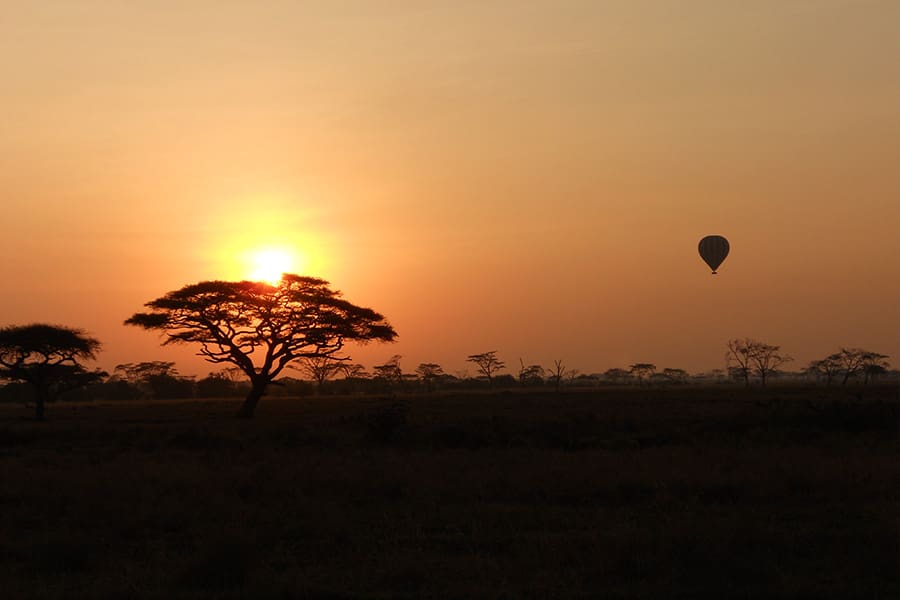
As the name suggests, night safaris take place after sunset and provide an entirely unique experience to day game drives. In the dead of the night, your senses become sharper, paying attention to every little sound you hear. Shapes and shadows of nocturnal creatures appear and vanish in an instant, eluding the gaze of curious safari-goers and any nearby predators- the excitement of being in the bush at this time of day is nearly palpable.
It is important to note that not all parks and conservancies offer night safaris, making them a particularly extraordinary activity. Within the Masai Mara, some of our select partner camps in the Mara Naboisho Conservancy offer night safaris as an extra activity.
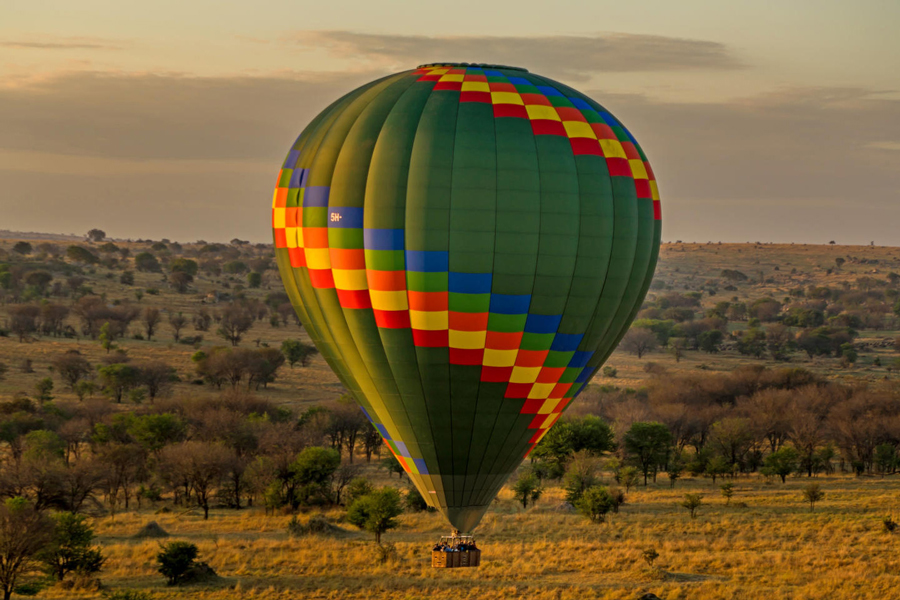
Hot air balloon safaris are an incomparable experience and one of the most unique things to do in the Masai Mara. It is truly something special- the thrill of heading out into the bush at the break of dawn to take off with your hot-air-balloon safari pilot, when the air is still crisp, and the blues of the night are transitioning to the deep oranges of the day.
A hot air balloon safari in the Masai Mara provides you with first-class views of the varying Mara landscapes, from the golden grasslands to the acacia woodlands and riverine forests. Mara hot air balloon safaris follow the ebb and flow of the Mara River- so if you're lucky, you might catch epic river-crossing scenes from the air! Of course, no hot air balloon safari is complete without a champagne bush breakfast after your flight.
“We floated for an hour and mostly about 50 feet above the ground. We saw a lioness on the move, elephants, giraffes and a lonely buffalo. We drifted over beautiful landscape and watched the other balloons float majestically around us. We also ascended to about 1000 feet above the ground giving us incredible panoramic and birds eye views. We even saw the Serengeti in the distance. After an hour, it was time for the fun land. The wind was on our side, and we touched down with just one bump. We had seen the vehicles following us, and they met us at the landing site. We were whisked off for a superb Champagne breakfast in the Mara – bubbles, bacon, egg, pancakes, fruit and yoghurt – such a delicious spread before the 30 minute game drive back to camp, arriving just before midday.”
Kate McIntosh, African Safari Expert
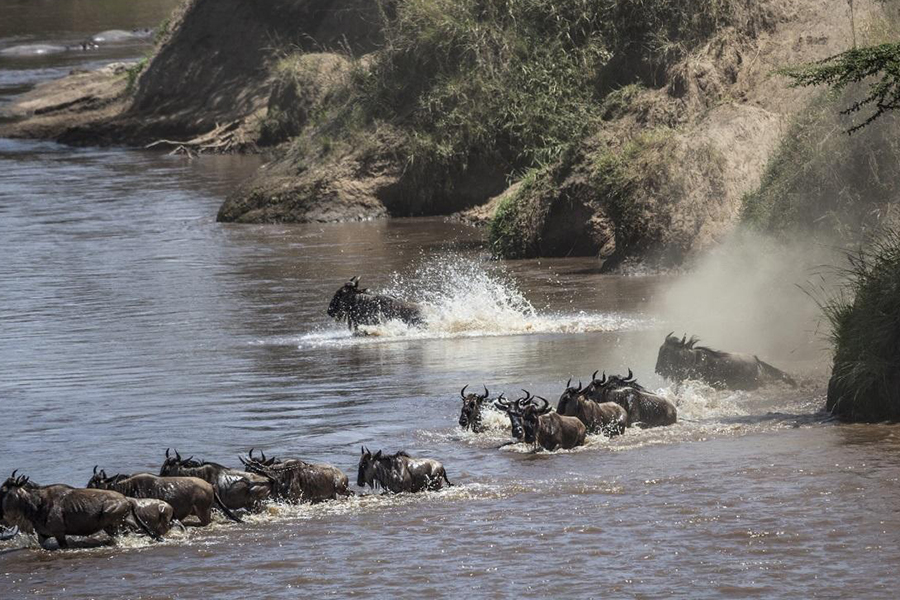
As one of the last great large-scale wildlife migrations on Earth, the Masai Mara Migration is a major draw for travellers visiting East Africa. When the herds reach the Mara River, this is where the famously dramatic and sometimes brutal river crossings take place, as they face hungry crocodiles and hippos in the turbulent waters with their young.
Whether you want to witness this phenomenon from a game vehicle not far from the action (and away from the crowds in private conservancies) or to soar over the route of the Mara River on a hot air balloon, the Masai Mara places you in the unfiltered view of the film-worthy Great Wildebeest Migration.

For those who enjoy stepping off the beaten path to try something new, a horseback safari is one of the top bucket list things to do in the Masai Mara. If you visit the Masai Mara during the Wildebeest Migration, you will have the amazing opportunity to ride with the zebra and wildebeest herds as they journey from the Serengeti into the Mara, and watch, mounted, riverside (from a safe distance) as the herds gallop ahead.
Of course, there is more to horseback safaris in Kenya than the Migration; you will also get to enjoy sights of plenty other big game such as buffaloes and elephants, as well as the beautiful and changing Mara landscapes. It is important to keep in mind that horseback safaris are recommended for experienced riders.
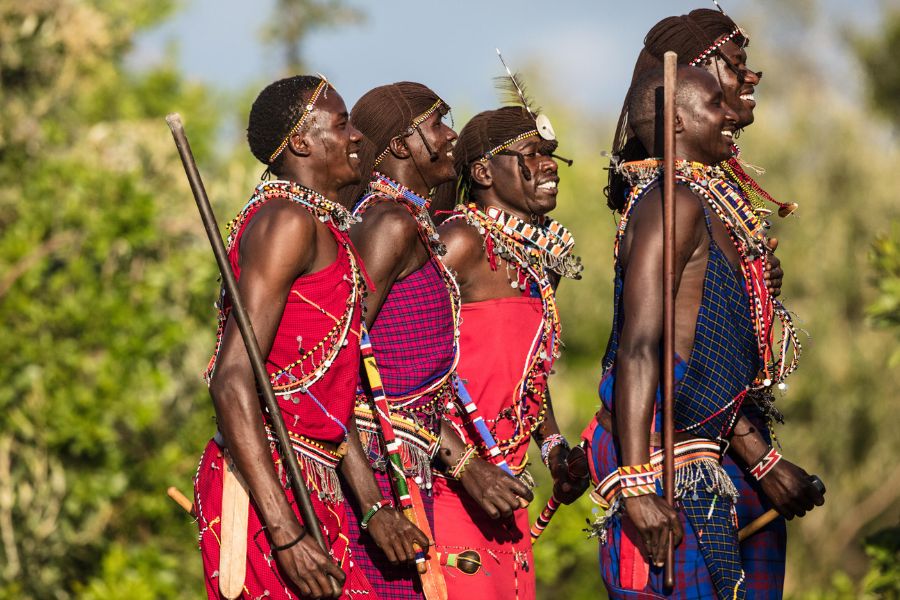
Cultural encounters in the Masai Mara are always an unforgettable experience for our travellers. The Maasai, an ethnic group native to East Africa, are renowned for their distinctive style of dress, which includes brightly coloured fabrics and intricate beaded jewellery. They have preserved their traditional way of life, making them one of the few African tribes that continue to practice pastoralism and hunting. Primarily located in Kenya and northern Tanzania, the Maasai speak the 'Maa”' language and are an integral part of the region’s cultural heritage.
A cultural visit is an authentic and enriching way to connect with the Maasai and gain insight into their way of life and relationship with the land. Many Maasai work in local camps and lodges, including Asilia Africa's properties, where staff and guides are often members of the community. They can arrange visits to their home villages, offering you the chance to meet local Maasai, learn about their customs, and experience their culture firsthand.
The Wildlife Tourism College of Maasai Mara (WTC) is a crucial training centre dedicated to enhancing employment opportunities for young Maasai in Kenya. Building on the legacy of the Koiyaki Guiding School, the WTC provides education in nature guiding, hospitality management, and climate impact reduction, aiming to improve job prospects and support conservation efforts. Located in the Pardamat Conservation Area, the college strives for high employment rates among graduates, increased visitor engagement, and enhanced environmental and social research.
By booking a trip with Go2Africa and staying at participating lodges and camps, travellers can support the WTC directly. For each trip booked, Go2Africa donates $5 to the college, contributing to the sponsorship of students and fostering community and conservation initiatives. This partnership ensures that your safari not only offers incredible wildlife experiences but also supports meaningful, positive impact in the Masai Mara.

Renowned as a heavyweight big cat territory, the Masai Mara is one of the best places in Africa for big cat sightings. The Mara has one of the highest concentrations of lion on earth with a population of roughly 850-900. The Masai Mara is second only to its neighbouring game park, the Serengeti National Park, which has a lion population of approximately 3000-4000.
In addition to the lions in the Masai Mara, the area is home to around 300 cheetahs. While this number may seem modest, it's significant given that fewer than 8,000 cheetahs remain in the wild across Africa. The Mara’s cheetah population is a crucial stronghold for the species. Though leopard sightings aren't guaranteed, they are fairly common, and with some luck, you may spot all three big cats during your explorations of the Masai Mara.

Nature walks (also known as bush walks and walking safaris) provide a break from the typical game drive, and a more intimate way to connect with the bush. A day activity, your guide and tracker will usually drive to a carefully selected location and park the vehicle to begin your walk in the bush. Routes are carefully chosen by knowledgeable guides and rangers are typically equipped with firearms for safety reasons.
Many of Kenya's national parks and reserves do not permit walking safaris, however some private conservancies and camps, such as Asilia Africa's Naboisho Camp in Mara Naboisho Conservancy, are able to arrange private bush walks for guests staying at their camps
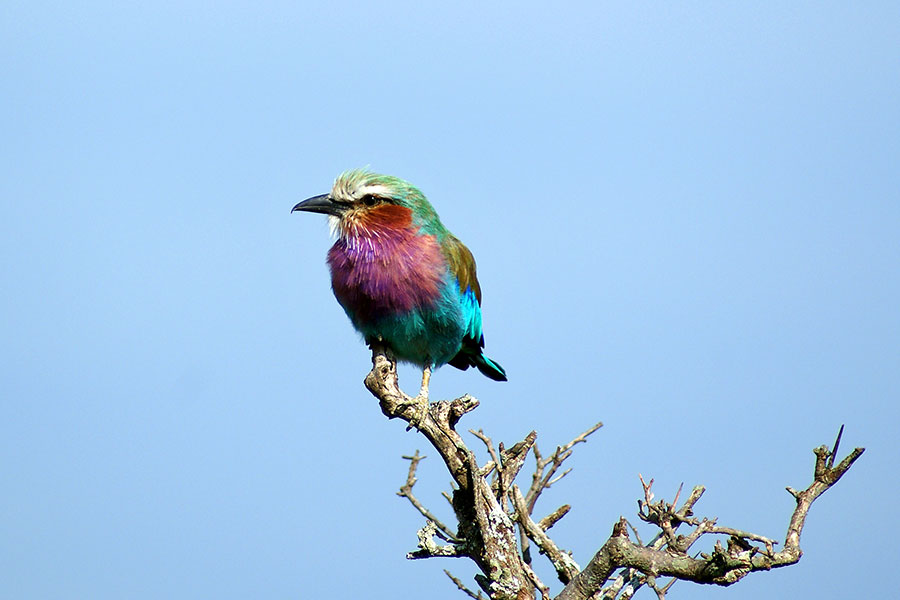
With approximately 470 to 500 bird species, the Masai Mara is a paradise for birdwatchers. Notably, the Mara is a year-round birding destination, so no matter when you visit, you’ll encounter plenty of feathered friends. However, the ideal time for bird enthusiasts is from late October to November, during the rainy season, when migratory birds arrive from Northern Africa and Europe.
In the grasslands, you can spot Ground Hornbills, Secretary Birds, and flocks of White Storks, while the Mara River offers views of seven kingfisher species and the colourful Ross's and Schalow's Turacos. For bird enthusiasts, the Musiara Marsh is a must-visit for rare species like the Rufous-bellied Heron and the endangered Madagascar Squacco Heron.

Fly camping is a private and adventurous bush camping experience only offered by a select few camps. Your journey begins with a paced guided walking safari to a remote, temporary camp, prepared for your arrival. Under the guidance of an experienced and armed guide, you will have a chance to really interact with your surroundings as you make your way to the day's chosen location outside of the main camp.
After a day of walking and wildlife encounters, you’ll spend the evening around a campfire under the stars. Worry not, you will still have access to basic but comfortable amenities such as a cozy tent, hot bucket shower, and a chef-prepared three-course dinner. It’s the perfect blend of adventure and simplicity in the wild. This intimate overnight stay immerses you in the bush, offering a chance to experience the wild in one of the most authentic ways possible.